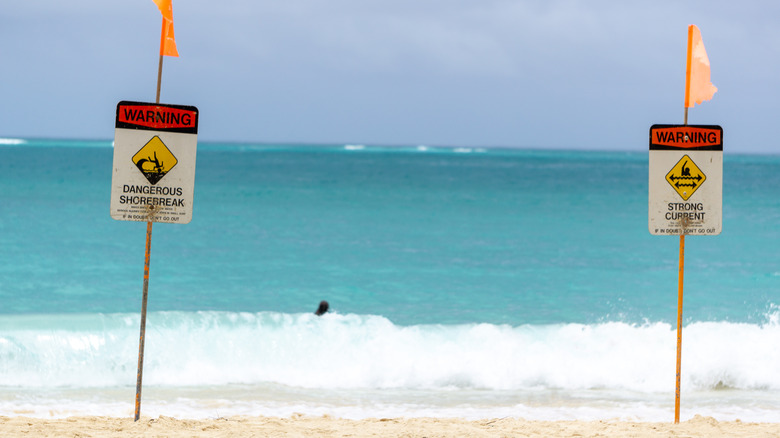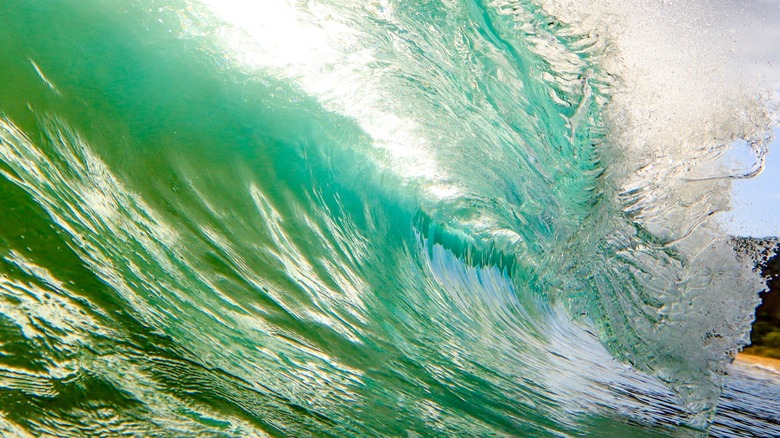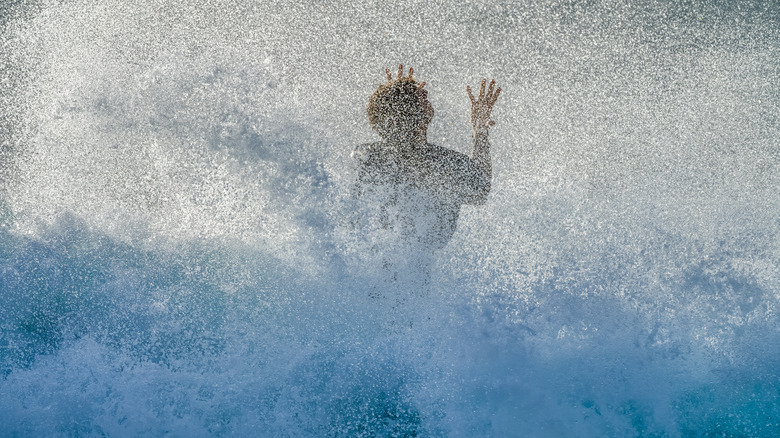What Is A Shorebreak And How To Survive One?
Anyone who has stood on an ocean beach looking seaward has seen breaking waves crashing and tumbling toward the dry sand. Essentially, waves break when they reach the maximum height they can support. This generally happens as the rolling energy within the water reaches shallow water, which forces it upwards. Once the water depth is shallower than half the wave's height, it breaks. This process, which happens repeatedly throughout the day, represents the culmination of a wave's journey across the sea. It also represents one of the more unexpected dangers for beachgoers.
In surfer parlance, a break is where a wave crests and crashes or breaks. There are numerous types of breaks, typically named for the type of bottom the wave crosses as it breaks or where the break occurs. While the amount of energy found in a wave varies due to wave height and length, a two meter high wave has been shown to have the same amount of energy as would be used to power a house for an entire day.
Needless to say, waves carry sufficient energy to cause serious injuries to humans. Although most beachgoers concern themselves with threats such as dangerous sharks, the elements that define the most dangerous surf spots and beaches in the world are riptide currents and breaking waves. While any breaking wave has the potential to cause injury, it is one particular type, the shorebreak, that poses the greatest threat. So, what is a shorebreak and how do you survive one?
What is a shorebreak?
According to the National Oceanic and Atmospheric Administration, shorebreaks are large waves that break directly on shore. They are a common cause of spinal and head injuries and drownings along surf beaches. Since this occurs right at or very near the shore, unlike other types of breaks, shorebreaks don't just affect those further out away from the beach. It can impact those simply walking or wading right along the shoreline. Luckily, many of these injuries are preventable if beachgoers are aware of the danger and know how to react to it.
The waves that result in shorebreaks are no different than any other waves. The difference is the beach itself. While most beaches gradually slope and may even have shallower areas such as sandbars or reefs fronting them, beaches that are prone to shorebreaks have a steeply sloped bank or shoreline. As a result, rather than gradually building in height as it would over a gently sloping bottom or breaking over a shallow bar or reef some distance from shore, shorebreak waves rise and crash quickly and dramatically right at the shoreline.
How to survive a shorebreak
When it comes to surviving a shorebreak, the first thing to do is be aware when you're on a stretch of beach where shorebreaks are likely to occur. Again, you will be able to determine this by looking at the slope of the shoreline as well as watching where the waves break as they approach shore. Additionally, many beaches will post warning signs that shorebreak conditions are present. Secondly, while near or in the water, never turn your back to the ocean. The most common cause of injury and drowning from a shorebreak is when someone is slammed into the beach by a crashing wave. This is much more likely to happen if you do not see the wave coming.
If you see the wave approaching and are on dry sand, move back quickly. If you're in the water, you have two options. One, attempt to dive through the wave before it breaks. To do this, you should turn sideways, drop the shoulder closest to the wave, and lunge into the wave. It is helpful to push off the bottom in order to gain enough force to push through the wave. The other option is to turn towards shore and try to ride it out. If you don't have a board, or have it pulled away, you can try to body surf your way in by launching your body across the water with arms extended and spine straight just in front of the approaching white water.


